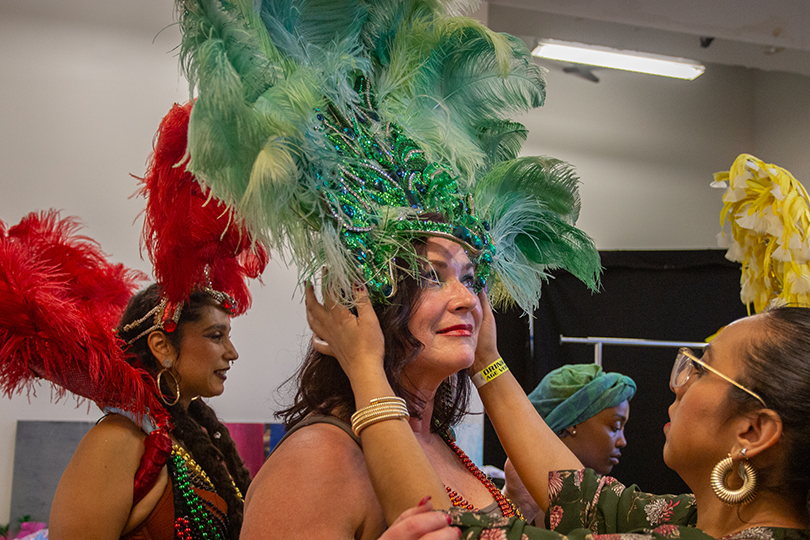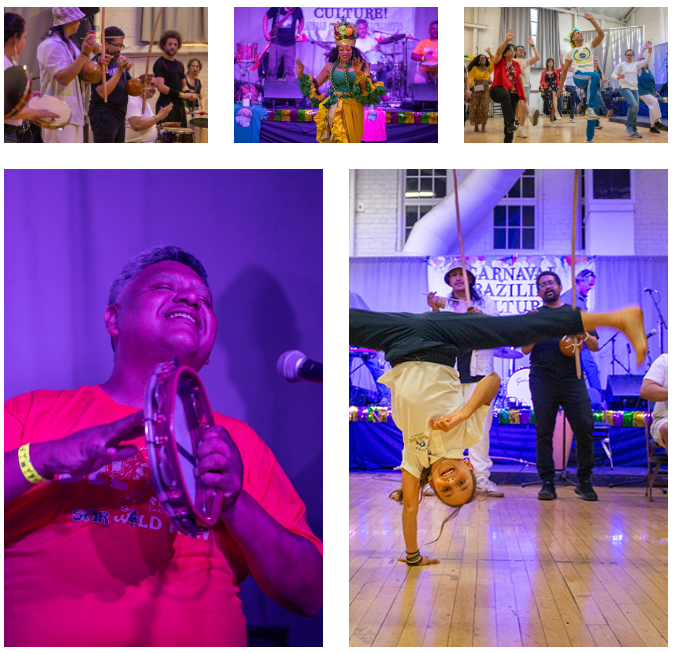Community members gathered in celebration at the third-annual Sacramento Brazilian Carnaval on Saturday, March 22 at CLARA in Sacramento. The event’s organizer, Marta Santos, is a native of the Brazilian state of Bahia and has been performing and teaching Brazilian dance in Sacramento for over 25 years.

This family-friendly event displayed Brazilian culture, including traditional foods and diverse performances of dance and music. Some food highlights were the Brazilian national dish “feijoada,” a meaty black bean stew served with white rice and collard greens, and the beloved street food “pastel,” a rectangular shaped deep fried dough filled with a variety of savory flavors from cheese to ground beef with green olives.

This grassroots effort brought together performing artists from Sacramento, Bay Area, North Bay and even Brazil. Weslei Guimarães from San Francisco-based dance group Estrelas do Samba performed a solo Gafieira, the elegant samba style born in Rio de Janeiro in the early 20th century.

Santos’ group Samba da Terra performed a lively “Dança das Lavadeiras” (the washerwoman’s dance), a choreography inspired by the enslaved African women tasked with hand washing clothing on the river banks during Portuguese colonial rule. Mara Leigh, who performed with the group Unidos do Viradouro at the Rio de Janeiro Carnaval in early March, brought a taste of the internationally famous parade to Sacramento with her samba performance.

Because of its colonial history, Brazilian culture has West African, Indigenous and European influences. A Brazilian party is not complete without a “Roda de Capoeira” (capoeira circle). This Brazilian art form that combines martial art with dance and spirituality dates back to the 18th century and was born from a blend of Angolan traditions brought to Brazil with the West African people enslaved by Portuguese rulers. Mestra Sarará brought down the house with her group Capoeira North Bay. A highlight of the circle was an incredible show of skill by 9-year-old Anaya Maré, daughter of Sarará.

Bahia native Slleyk da Bahia, a choreographer from Olodum, led an energetic dance class to the sounds of live drums. Olodum is the internationally acclaimed Afro-Brazilian music and dance group that collaborated with Paul Simon in the 1990 track “The Obvious Child” and with Michael Jackson in the 1996 single “They Don’t Care about Us.”

Master dancers Weslei Guimarães (left), Marta Santos (middle) and Mara Leigh (right) perform at the third annual Sacramento Brazilian Carnaval on Saturday, March 22 at CLARA in Sacramento.
The reggae sounds of Sacramento-based band Roots Man Project reminded attendees that the culture of the African diaspora crosses country boundaries and unites people. To close the event, Sacramento’s Boca do Rio band got everyone dancing with their unique psychedelic samba funk sounds.

“Brazilian culture is for everybody,” said Santos, the event organizer. “It’s for people of all skin colors, of all sizes, of all cultures. The goal is to have fun together and build community.”
This story is part of the Solving Sacramento journalism collaborative. This story was funded by the City of Sacramento’s Arts and Creative Economy Journalism Grant to Solving Sacramento. Following our journalism code of ethics, the city had no editorial influence over this story. Our partners include California Groundbreakers, Capital Public Radio, Outword, Russian America Media, Sacramento Business Journal, Sacramento News & Review, Sacramento Observer and Univision 19. Sign up for our “Sac Art Pulse” newsletter here.





